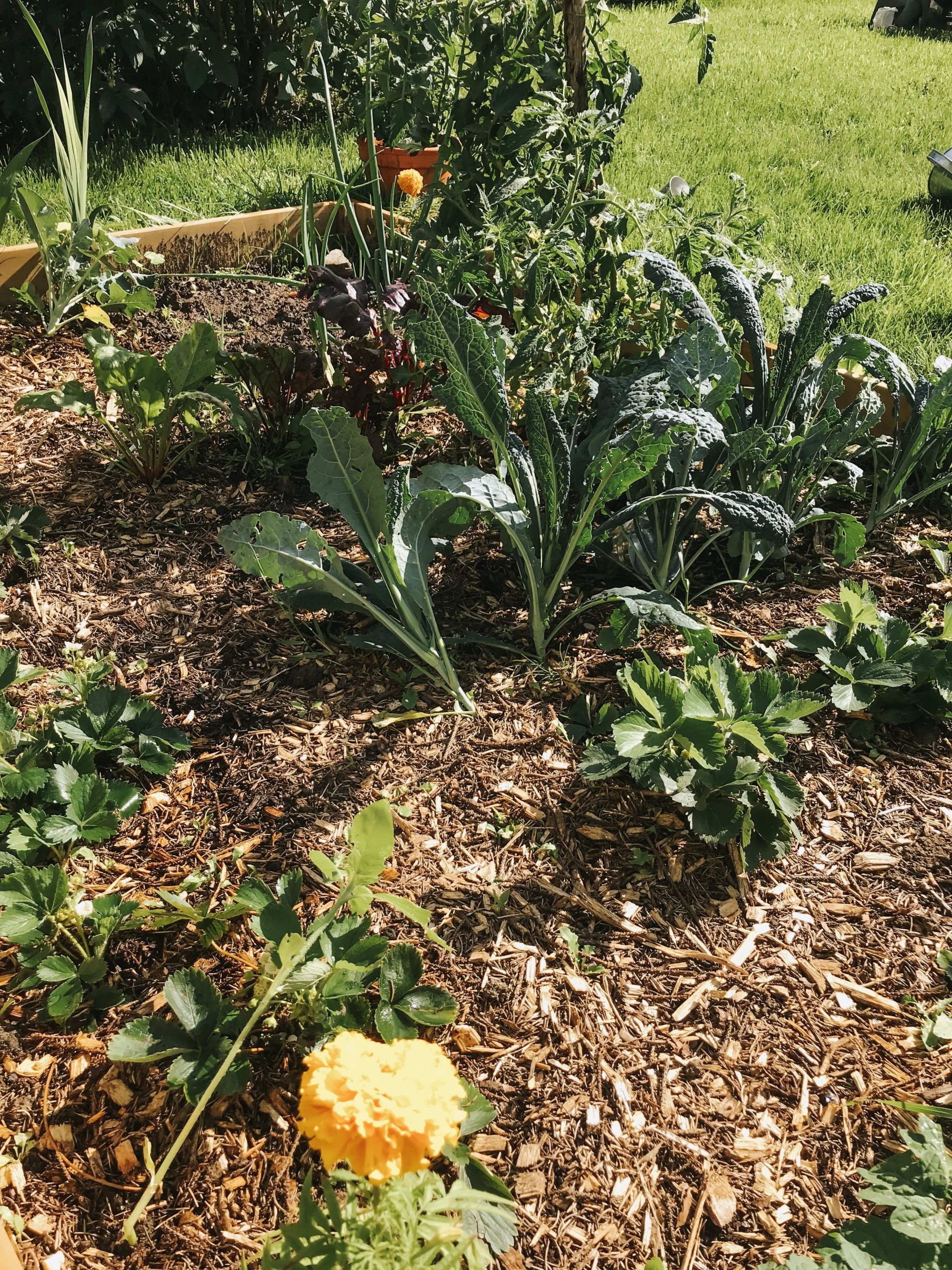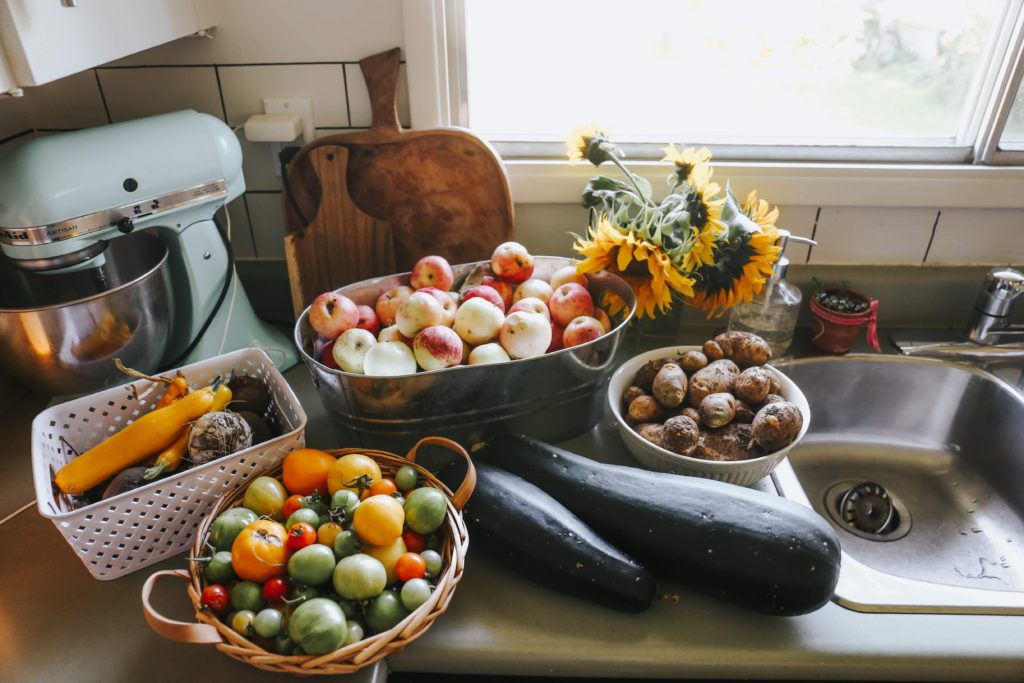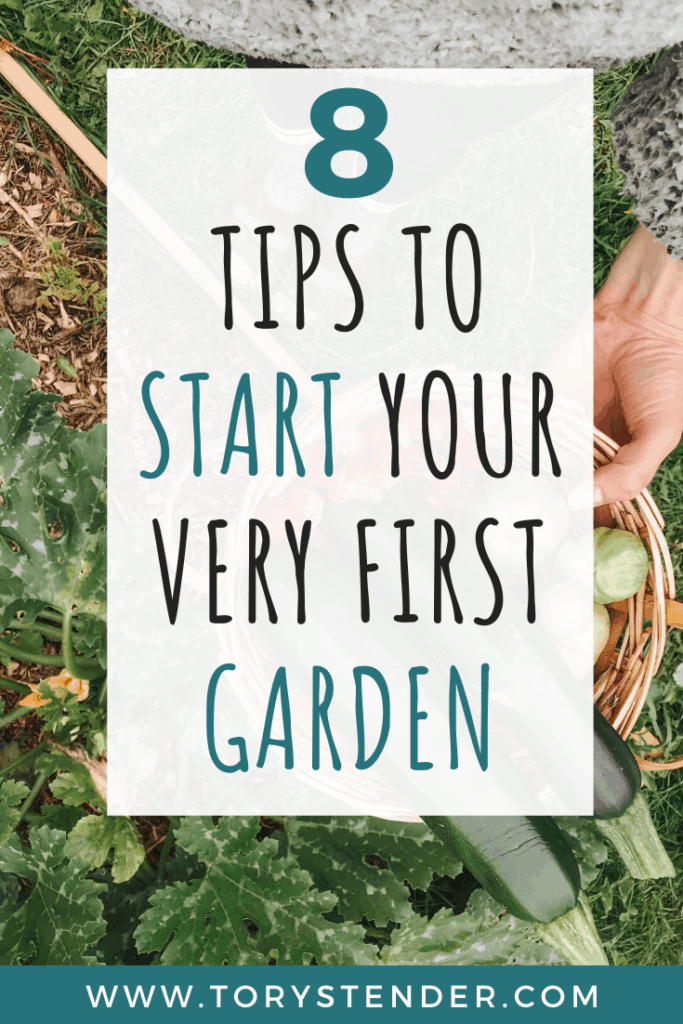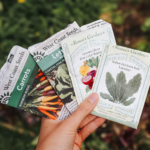Gardening is such a fun and rewarding hobby! Are you wanting to plant your first garden but don’t know where to start? Do you think that you’ll kill every plant you try to grow? My goal is that after reading this you feel confident to start your very first vegetable garden!
When you first start gardening it might feel SO overwhelming. There are so many things that people are talking about: brands of soil, heirloom seeds, harvesting and canning, making your own compost, good bugs vs bad bugs.
But if you just start with the BASICS, I promise you will see some success with gardening!
As with everything, you don’t need to know everything before you begin! Just learn the key basics that I talk about in this blog post, and then go for it! The rest you’ll learn with time or as issues come up in your garden.
ZONE
Possibly the most important thing to understand before you plant your first garden is what zone you live in. Garden zones range from 1-13 (1 being the coldest and 13 being the warmest).
The zone you’re in will determine what plants will thrive, when to start seeds, when to plant in the ground, etc. Finding this out is crucial because if you live in New York but are following a gardener in LA, you’re going to have VERY different results.
These tools will help you determine your zone if you live in Canada or the US. You can also simply Google “your city” + “gardening zone”.
PLANT WHAT YOU’LL EAT
When I first started gardening every article told me that kale was one of the easiest vegetables to grow! So I grew a whole bunch of kale, only to realize that I don’t actually really like kale! This seems obvious, but I think it’s actually more common than you might think. When you plant your first garden grow the vegetables that you buy every single week at the grocery store!
TIMING
Keep in mind how much you’ll be able to eat. Lots of crops like potatoes, beets, carrots, onions can be easily stored for many months. Other crops like tomatoes or lettuce are better eaten fresh. Of course canning, fermenting or freezing are great options for many vegetables if you’re wanting to go down that road.
But when you plant a full row of lettuce, keep in mind that ALL those plants will be ready at roughly the same time! You might want to consider staggering when you plant crops like spinach, lettuce, kale so that you have a fresh harvest all summer instead of just for 2 weeks.
There are many ways to preserve your vegetables for many months, but it is a whole extra learning curve! While you’re waiting for your crops to grow you can start researching how to preserve or use them up!
SOIL
The quality of your soil will directly impact the quality of your vegetables. Thankfully quality soil doesn’t have to be expensive! My preference is to avoid large brand name soils like Miracle Grow and support my local nurseries!
Personally, I love using a compost mix with tons of nutrients.
If you’re filling more than 1-2 small planters, I recommend doing a bulk order of soil from a nursery. This is significantly cheaper, creates less plastic waste and you’ll likely get a high quality soil! If you have access to a pickup truck (ask a friend!) you can pick up soil, otherwise you can pay a delivery fee to have it delivered to your home.
I wish I knew how affordable and easy this method when I planted my first garden years ago!
Mulching your garden helps lock in moisture which is especially important if you live somewhere hot & dry! You can purchase mulch in bulk, but you can also often find it for free in your city! I wait to mulch my garden until all my seeds are at least a few inches tall.
Chopped up leaves, grass clippings or hay are also popular (and often free!) options for mulch.

SUN
The location of your garden will determine what vegetables will thrive! If the space gets full sun all day, you have so many more options. If you only get a few hours of morning or afternoon sun you may be slightly limited to what crops you can grow.
Knowing your zone will be helpful here because 8 hours of sunlight in zone 3 is very different than 8 hours of sun in zone 10!
If you live in a hot climate near the equator, the sun is going to be SO much stronger than if you live in Alaska! I find that my plants (in Zone 3) need many more hours of sunlight compared to friends in warmer climates!
Sun loving veggies: Tomatoes, zucchini, peppers, squash, pumpkins, strawberries, corn, watermelon
Shade tolerant veggies (most still need SOME sun, but may do well in a spot with fewer hours of sunlight) : lettuce, kale, spinach, nasturtiums, beets, carrots, swiss chard, potatoes
SEEDS
Purchasing high quality seeds is important for the quality of your vegetables. Personally I always purchase Organic seeds that haven’t been pre-treated with any pesticides or herbicides.
A few of my favourite seed brands:
Lily Stone Gardens (for cut flowers)
Many people find seeds daunting when they plant their first garden so they opt for pre-grown plant starters from a nursery. There’s nothing wrong with doing this and many people have lots of success with this method!
However, an entire package of seeds is typically the same price as ONE starter plant. And many seed packages can be used for 2-3 years from when they were packaged. So obviously if you’re wanting to save money, seeds are the solution!
Certain plants thrive when they are started in a greenhouse and then transplanted once the days and nights are warmer. Other plants will actually do better just being directly sown into the Earth!
Gardeners all have their own preference on which seeds to sow directly into the ground, which to start indoors or which to purchase from a greenhouse.
This is where understanding your zone may come in handy. For instance, in zone 3 where I live, the growing season is very short. So crops like squash, pumpkins, or tomatoes that take longer to grow, I will start indoors! But crops like spinach or lettuce that grow quickly I will sow into the ground.
Plants that do well direct seeding into the ground (in my experience!): Zucchini, onions, beets, carrots, radish, sunflowers, spinach, lettuce, garlic

STARTERS
Starting seeds indoors can be really fun and exciting especially to get a taste of spring if it’s still cold outside!
If you chose to purchase your starters, quality is important just like it is with seeds. I recommend finding a trust-worthy local greenhouse and avoiding large box stores!
Again, it’s very important to understand your zone and when your last frost date it. You don’t want to start your tomatoes a month too early and then not have room for them as they grow!
Starters need a TON of sunlight or grow lights. A West or South facing window that gets light most of the day will be the best option if you don’t want to purchase grow lights.
Before planting your starters in the garden they need to go through a “hardening” stage which is when you slowly expose them to the environment/climate they’ll be planted in. Your starters will go into shock if they go directly from a windowsill to a garden that has harsh sunlight, winds, and cooler temps at night!
Plants that do well started indoors or purchased as starters: Strawberries, herbs, pumpkins, squash, tomato, broccoli, celery, peppers.

COMPANION PLANTING
This might be beyond “beginner” level, but it’s worth learning as you plant your first garden! Companion planting is the idea that certain plants will thrive when planted next to other plants.
Plants like zucchinis and squash have flowers that need to be pollinated by bees so it helps to plant bright coloured flowers like marigold nearby!
Planting a tall plant like tomatoes in front of lettuce will help block the sun if your garden gets full sun all day.
Strong scented plants and herbs may help deter bugs like aphids that can damage your crops.
The stems of your sunflowers can provide a trellis for vining plants.
Plants require and produce different chemical compounds like nitrogen, potassium, and calcium. Understanding this is an important part of companion planting.
Beans produce nitrogen which is beneficial for corn which need high levels of nitrogen.
Broccoli doesn’t like extra nitrogen so don’t plant it next to beans. Instead it will thrive near veggies that give off calcium like carrots or tomatoes.
I don’t think that companion planting is 100% necessary if you’re overwhelmed already. But it also costs $0 and only takes a few extra minutes to plan and you will see an improvement as your plants grow!
I hope this was helpful as you learn how to plant your first garden! Gardening should be a FUN learning experience. Don’t be discouraged if your first season doesn’t reap a massive harvest! There are lots of things to learn, and practice makes perfect. Just keep going and I promise one day you’ll have the garden of your dreams!
If you enjoyed this blog post or found it helpful be sure to pin the photos below to save this reference for later or to share with a friend.













